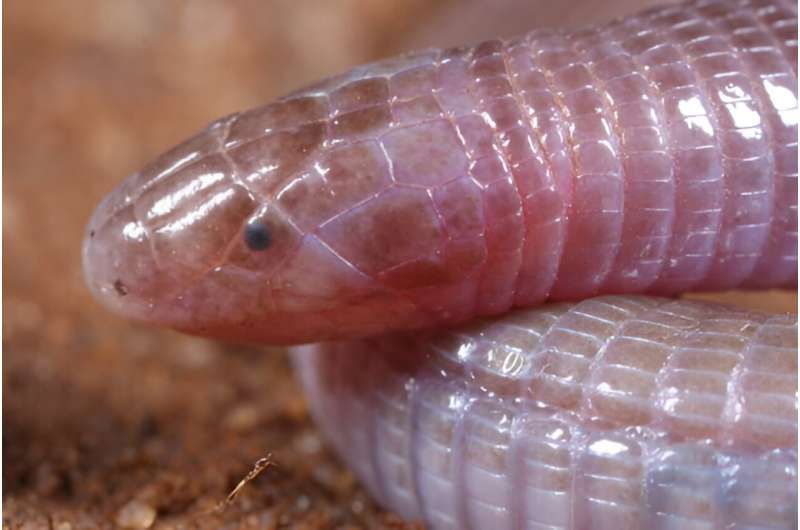Unveiling the Hidden Secrets of an Unusual Snake-like Worm through CT Scans

February 12, 2024
The current article was examined thoroughly as per the editorial procedure and policies of Science X. Its credibility was ensured by focusing on certain aspects:
- fact-checking
- trustworthy source
- proofreading
Judged by Julia Sames, University of Texas at Austin
Amphisbaenians come across as peculiar creatures. Somehow resembling worms having spine, scales, a prominent central tooth and occasionally small forearms, these reptiles are subterranean in lifestyle where they dig channels and exhibit predatory skills on almost everything that comes in their way, quite in analogy to a miniature version of the massive sandworms depicted in 'Dune.'
Even though they are located across a considerable portion of the world, much remains to be known about how amphisbaenians behave in the wild due to the difficulty in observation in their natural underground setting in sand and soil. However, a new understanding about these creatures and their distinctive anatomy is emerging from two papers published in the The Anatomical Record's March issue.
Researchers at the Jackson School of Geosciences, The University of Texas at Austin, performed an in-depth comparative analysis of 15 amphisbaenians from southern Africa using a micro-CT scanner, and compiled a bone-by-bone catalog of every cranial anatomical feature of the species Zygaspis quadrifrons. These are the most comprehensive studies of southern African amphisbaenians till now, say the researchers.
By employing CT scanning, the researchers were able to generate individual bones as large 3D-printed models, allowing them to closely examine bones like the tabulosphenoid, which is near entirely inside the skull and almost invisible without such technology, commented Christopher J. Bell, the paper's lead author who studied the skull structure of Zygaspis, and is a professor at the Jackson School.
'The skull size of Zygaspis quadrifrons is such that three of them can be accommodated on my pinky nail. We can now scrutinise these tiny vertebrate organisms in a level of detail that was unavailable before,' stated Bell.
The research initiated over 15 years ago when a team led by Patrick J. Lewis, co-author in both papers and professor of paleobiology at Sam Houston State University, traveled to Botswana to trap and study various animals. While taking samples of the environment and conducting digs, they started capturing amphisbaenians. Initially, Lewis was unfamiliar with them. When a student handed him one, he was surprised by its strength despite its worm-like appearance.
'They squirm and make attempts to escape, moving in ways that aren't characteristic of worms. They are closer to tiny snakes in their movement and interaction. It's quite surprising for something that's so small. That kind of behavior is unexpected,' Lewis remarked.
The CT scans produced significant images, revealing sutures inside the skull: deep, thin curves that 'lock' onto each other, as described by Lewis. The scans also depicted in great detail the peculiar solitary central tooth of the amphisbaenians which interlocks with two bottom teeth.
'The powerful jaw muscles in amphisbaenians, in combination with this, facilitate a strong bite capability for such a small animal. They can bite into their prey and tear pieces out,' commented Bell.
Antonio Meza, who is the lead author of the paper studying the different species of amphisbaenians and a first-year doctoral student at Arizona State University, mentioned that like other reptiles, amphisbaenians are born with an egg tooth enabling them to emerge from their shell.
'But in amphisbaenians, this egg tooth is retained,' he added.
Meza's evaluation also confirmed the presence of sexual dimorphism in Zygaspis quadrifrons, with females being larger than the males in this species.
Limited biological and ecological data on amphisbaenians make the study of their anatomy the most efficient approach for researchers to glean more insights about these strange creatures and the concealed lives they lead underground.
More details can be found in:
Courtesy: University of Texas at Austin




